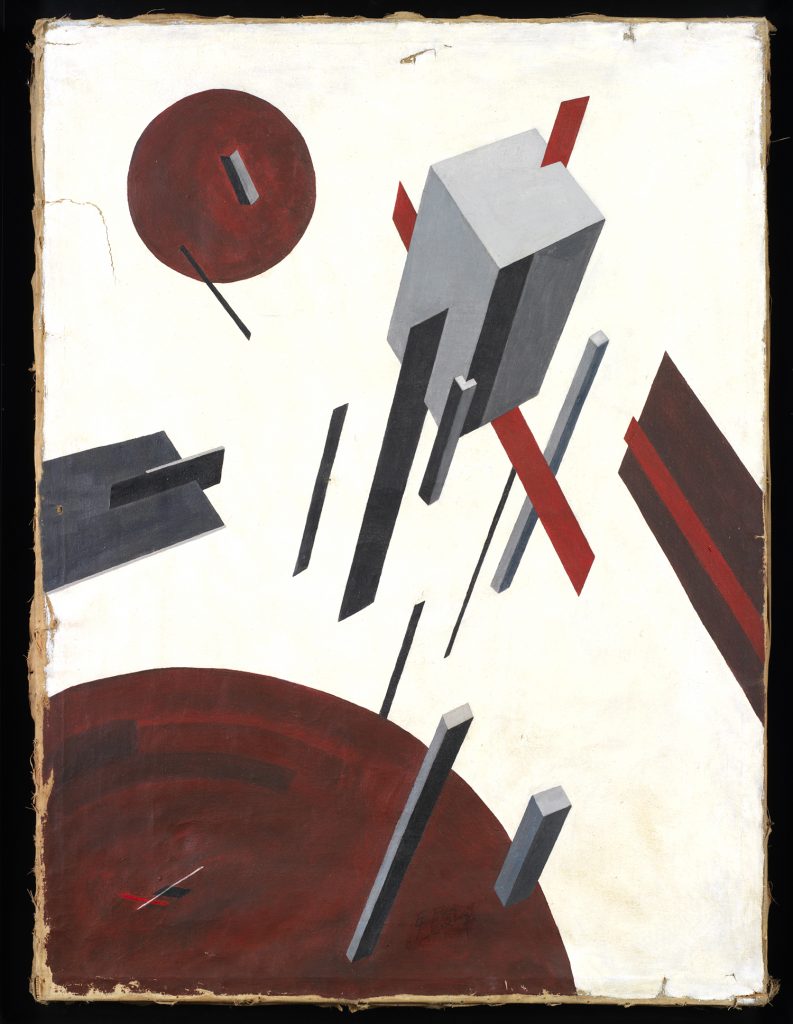El Lissitzky (1890-1941)
Proun 5A, ca. 1923
Oil on canvas
Courtesy of the Leonid and Tatiana Nevzlin Collection
El Lissitzky was an important figure of the Russian avant-garde and among the artists associated with the abstract art movement Suprematism. he designed propaganda works for the Soviet regime. The Proun paintings served as metaphors for societal changes. This canvas includes constructivist forms that recall architectural drawings. The composition that rotates around a central point is typical of the Suprematist artistic approach.
Must Know
he lived and studied in Vitebsk and as other Jews he went to study in Germany. The Proun paintings, an acronym for “project for the affirmation of the new”, are a metaphor of the changes in the society. The canvas includes constructivist forms, which are reminiscent of architectural drawings. The composition is rotating around a central point reminding suprematism. This avant-garde trend was a way for the painter to express political concerns, therefore his paintings can be considered as a metaphor of society, embodied by the shifts, the perspectives and antithetical compositions.
Between painting and architecture, Lissitzky’s flat constructions hold a complex combination of axis, points and variable perspectives. This mathematical protocol is in mirror with the roughness and rigidity of the modern world. The painter uses the exercise of lines, forms and dimensions to engage a reflection on construction and design. The geometric patterns are abolishing the traditional codes of composition and perspectives.
In the artist’s words, “Proun is the interchange station from painting to architecture”. Inspired by Kazimir Malevich, Lissitzky reassessed the notion of space and dimension, claiming a new conception of the city after World War I and the Russian revolutions. His works are engaging a form of language where fine art pursues a revolutionary commitment. Abstraction can say something on social values where technology and architecture can share common aesthetics, in a utopian ambition. The dynamic of geometry is merged with urban life and industry, reducing the borders between aesthetic and utility, abstraction and reality, contemplation and facts.

